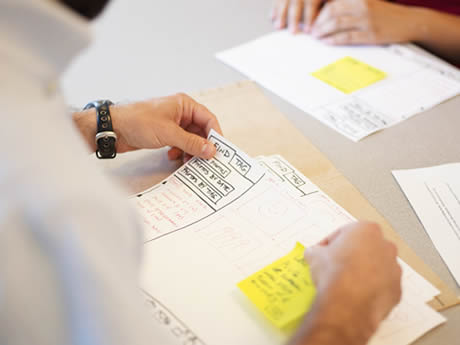Research
On the surface the kind of research that we did for this project seemed like something I might have done before. However, as we delved into the assignment I realized we were approaching this from a much deeper angle. We were not just asking women what they liked and didn’t like. We were getting to the heart of her needs without asking directly. That is a concept that I have always admired, but never completely understood how to accomplish. I tend to be rather blunt and direct, but this exercise was a good one in how to coax information from a subject. It was also a great opportunity to explore the “what should we have asked” questions. In the past when I have done surveys or interviews it has generally been one round of questions. In this case we did our series of interviews and then formulated our survey. This gave us a great opportunity to fine-tune the survey questions to ensure we were getting exactly what we needed from the respondents. We could test the hypotheses that came from the interview findings! This worked great, except of course in reviewing the survey responses we thought of other things we could have asked. Perhaps it is a never ending circle, but never the less it was a great experience.
Prototyping
Without a doubt, one of my greatest takeaways from this Nordstrom project has been the concept of prototyping. Prior to this class a prototype seemed only like a concrete thing, constructed by designers and fabricators, that was a preliminary version of your project. While that might be true in some instances, through this process I have learned that a prototype isn’t just a thing, it’s a process. The process of prototyping is similar to ideation in that you move through different ideas, changing this or that, allowing what you are creating to morph with each new thought. Prototyping is like physical ideation. It doesn’t have to be perfect. Anyone can do it! Just take any objects around and use them to convey your ideas. The most powerful learning, I think, is that prototyping doesn’t have to be 3-D. I was completely baffled at the prospect of prototyping a service or a website. I don’t know HTML5 or animation. It was fascinating to see how dragging out your pencils and BIG sheets of paper (and I feel like big paper is essential) can open your mind to creativity and you can really work through each step of your idea by drawing it on paper. I am not an artist, but as the scribe of the group it was incredible to see our team’s ideas come to life on my page.
Video Presentation
Of all of the parts of this project putting our findings into a video presentation was the least helpful part. That was just one more layer of stress to add to the mountain of deliverables. Since this project was for an actual client – Nordstrom – I felt that there was much more pressure to deliver the highest quality work. We certainly delivered that from a research and customer insights perspective, but in a work situation we would have had the support of a production team. While I do have some film production training and do pretty well with iMovie, I felt like the pressure to create a client-worthy video was unnecessary and did not add to the learning of the class.
Emotions
Working on this project as a team was invaluable. This kind of research and creative thinking is best done with a team. It was fantastic to bounce ideas around the group and I was always impressed with the things that came out of our brainstorming sessions! There were times that I was frustrated by group members with lofty goals that were outside of our abilities for this project, but as a group we were able to keep moving towards a project that we are all proud of. I really enjoyed moving through the stages of the class with this project at the center. This is my favorite sort of class – where you can immediately apply course concepts to a real situation. The fact that the project was central and relatable to us was also a huge bonus. Overall, this was a great experience. This is definitely in my top 3 projects that I am most proud of from my MBA, and I plan to use this project as a portfolio piece/interview topic in my job hunt.



